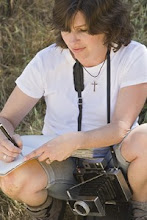7.23.08
A.M.
Walk through Davis downtown with Ruth, tree ID training
Sycamores - most planted are actually London Plane trees (platanus x acerfolia) not our native California Sycamores (platanus racemosa) difference is easy to see in the shape of the base of the leaf.
holes in leave indicate disease anthracnose
Japanese Zelkova (Zelkova serrata) part of the elm family, easy to confuse with Elms, but leaves have rough sandpapery feel to them - they also have tiny berry fruits that elms don't have.
Two main pears to remember: Bradford pear (pyrus calleryana Bradford) and Evergreen pear (pyrus kawakamii)
main things to look at: leaves of kawakamii have wavier edges & some stay on tree in winter (hence evergreen.) Growth habit of Bradford usually pretty straight up V growth of branches, while Kawakamii brances grow out in a wandering horizontal then up habit - trees look like they're dancing... And the bark of Bradford has long grooves it grows in while Kawakamii bark has the look of alligator skin -
Ulmus - Elms
Chinese Elm has very small leaves, a weeping habit and the bark looks peeled back to show a "monkey puzzle" pattern with orange dots.
Siberian Elm have mid-sized leaves
American Elm leaves are very large, even on a young tree we saw
Holes in leaves indicate elm leaf beetle
Silver Maple fooled me, as the one we saw didn't have as thin shaped leaves, nor were so silvery. Ruth identified it by it's shaggy looking bark.
Later we found a couple English maples (acer campestre) leaves pretty different from the silver -
Ruth broke a Camphor tree leaf for me - smelled strongly - I finally found the species of that unknown tree at JFK! Cinnamomum camphora: glossy leave, bark different but I've now learned that the bark on trees can change from a young tree to a mature one - something I'd never thought of before -
More from the Elm family - hackberries - two main Hackberry trees to know here: Chinese Hackberry (celtis sinensis) and European Hackberry (celtis australis)
Chinese has shorter, rounder leaf with red or orange fruits, European leaves are longer an dhave dark berries, and are less likely to have the Hackberry aphid, which make the leaves look wet and sticky -
Saw a Loquat (eriobotrya japonica) leaves reminded me of magnolia but with deep grooves and dustier looking. Fruits were nearly all gone, just a couple dried up and dark.
Ruth asked me to ID a bottlebrush (callestemon spp) I realized that the leaves grow in a bottle brush looking way as well as the flowers.
Found a South African Sumac (rhus lancea) which I mistook for a desert willow, but the sumac leave grow in threes - something to remember.
A couple more AHA moments when we found a Podocarpus gracilior, Fern Pine, not on the official Davis tree list, but I have several in the backyard which I had never been able to postively ID before - And now I know the trees in front of my midtown art studio with the round leaves are Carob Trees (ceratonia siliqua.)
Also saw a strawberry madrone (arbutus unedo) up close -
Got a couple photos of a Japanese Pagoda Tree (sophora japonica) looked different from the other photos I'd seen. It had tons of tiny yellow flowers that it constantly drops on the ground; in fall the bean pods I'd seen in ID photos will appear.
Mayten tree (maytenus boaria) across the street - again, nothing like the photos I'd seen - individual leaves grow off branches that weep straight down.
Little Leaf Linden (tilia cordata) with berries and leaf-like subtending bract - likely the only linden I'll find in Davis -
Saw alot of other trees I was able to easily identify, so not noteworthy today. Ruth said we probably covered around fifty trees today. I guess I'm actually making progress.
I've learned that apples are in the Rose family. Took a photo of this crab apple (malus sylvestris) if the apples were bigger, it would be malus domestica, our common apple.
Next to this tree was another crab apple with tiny fruit, Ruth said would be cataloged as Malus spp.
Wednesday, July 23, 2008
Subscribe to:
Post Comments (Atom)










No comments:
Post a Comment